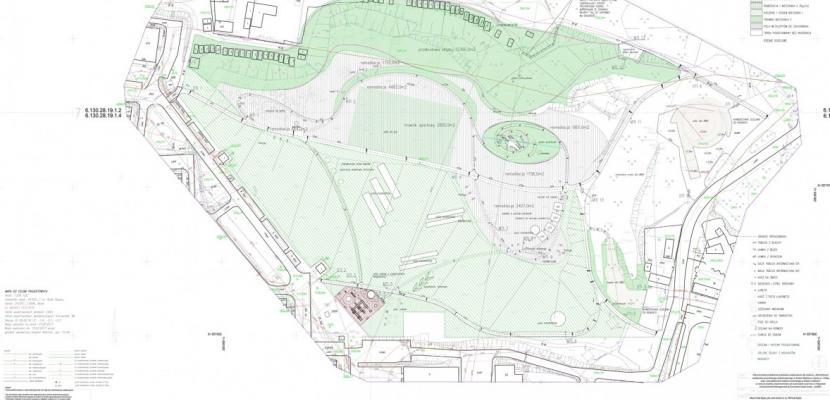Image

Revitalization of the zinc heap in Ruda Śląska
Published on 19 February 2020

Poland
Śląskie
This is the good practice's implementation level. It can be national, regional or local.
About this good practice
Lands formerly degraded by the mining industry in central parts of cities were not only an undesirable element that disfigured the landscape, but were also areas of ecological threat due to strong degradation of the earth's surface, dusting of waste and a highly transformed area. Main problem and target of actions designed for area of zinc spoil heap in Ruda Śląska was the soil contamination and the process of the situation improving with remediation, to reach safe recreational open space there. Additional targets were: to mitigate dangerous sharp and high crags on the northern heap edge; build possibly low cost in maintaining leisure infrastructure with possibly broad offer, vandalism resistible, and with deep connections with local identity and history.
Actions included:
Formation and stabilization of the northern slopes.
Remediation and phytostabilization of the upper layer.
Construction of a path system, alleys, lighting installation and monitoring system.
Recreational infrastructure: viewpoints, barbecue areas, a gym, playground, educational path.
As a result of the project, a 19.419 m² zinc heap area was reclaimed located in the area in Ruda Śląska - Nowy Bytom, which was secured against further emission of harmful substances and obtained natural and aesthetic values.
Visitors include residents of Ruda Śląska, but also from Silesia and Poland (tourists, families). An educational trail and pedestrian-bicycle connections and functions are planned.
Actions included:
Formation and stabilization of the northern slopes.
Remediation and phytostabilization of the upper layer.
Construction of a path system, alleys, lighting installation and monitoring system.
Recreational infrastructure: viewpoints, barbecue areas, a gym, playground, educational path.
As a result of the project, a 19.419 m² zinc heap area was reclaimed located in the area in Ruda Śląska - Nowy Bytom, which was secured against further emission of harmful substances and obtained natural and aesthetic values.
Visitors include residents of Ruda Śląska, but also from Silesia and Poland (tourists, families). An educational trail and pedestrian-bicycle connections and functions are planned.
Resources needed
Project value: PLN 1 806 015,77
Project co-financing from the EU: PLN 1 535 113,40
ROP Silesia 2007-2014
Project co-financing from the EU: PLN 1 535 113,40
ROP Silesia 2007-2014
Evidence of success
The dump developed for recreational purposes is unique on a national scale as phytostabilization ( i.e. planting of plants, whose task is to protect against the escape of heavy metals outside and stabilize the slopes) was applied for the first time on such a scale.
Revitalization of post-industrial areas with preservation of biodiversity and protection of natural habitats of protected species.
Creation of green and safe connections between housing, shopping, recreation and working areas.
Revitalization of post-industrial areas with preservation of biodiversity and protection of natural habitats of protected species.
Creation of green and safe connections between housing, shopping, recreation and working areas.
Potential for learning or transfer
Revitalization design for zinc spoil heap in Ruda Śląska is an attempt to solve as many environmental and social problems as possible. According to sustainable development rules, technologies of remediation and phytostabilization were taken into consideration and were applied to whole accessible area. Much of the local flora was preserved as a source for natural succession. To support biodiversity nearly all added plants are native.
Spatial and architectural solutions have original form and should be legible and easy to use. Small architectural elements, among them area information elements, are resistible for vandalism and possibly not too much expensive, easy to maintain, repair or exchange. All solutions were designed to follow spatial, social, economical and natural demands of sustainable development and following ideas of green urbanism, the local action for biodiversity, European Landscape Convention and others.
The realization was a part of the LUMAT Interreg project.
Spatial and architectural solutions have original form and should be legible and easy to use. Small architectural elements, among them area information elements, are resistible for vandalism and possibly not too much expensive, easy to maintain, repair or exchange. All solutions were designed to follow spatial, social, economical and natural demands of sustainable development and following ideas of green urbanism, the local action for biodiversity, European Landscape Convention and others.
The realization was a part of the LUMAT Interreg project.
Further information
Website
Good practice owner
You can contact the good practice owner below for more detailed information.
Organisation
Ruda Śląska City

Poland
Śląskie
Contact
Project Coordinator
